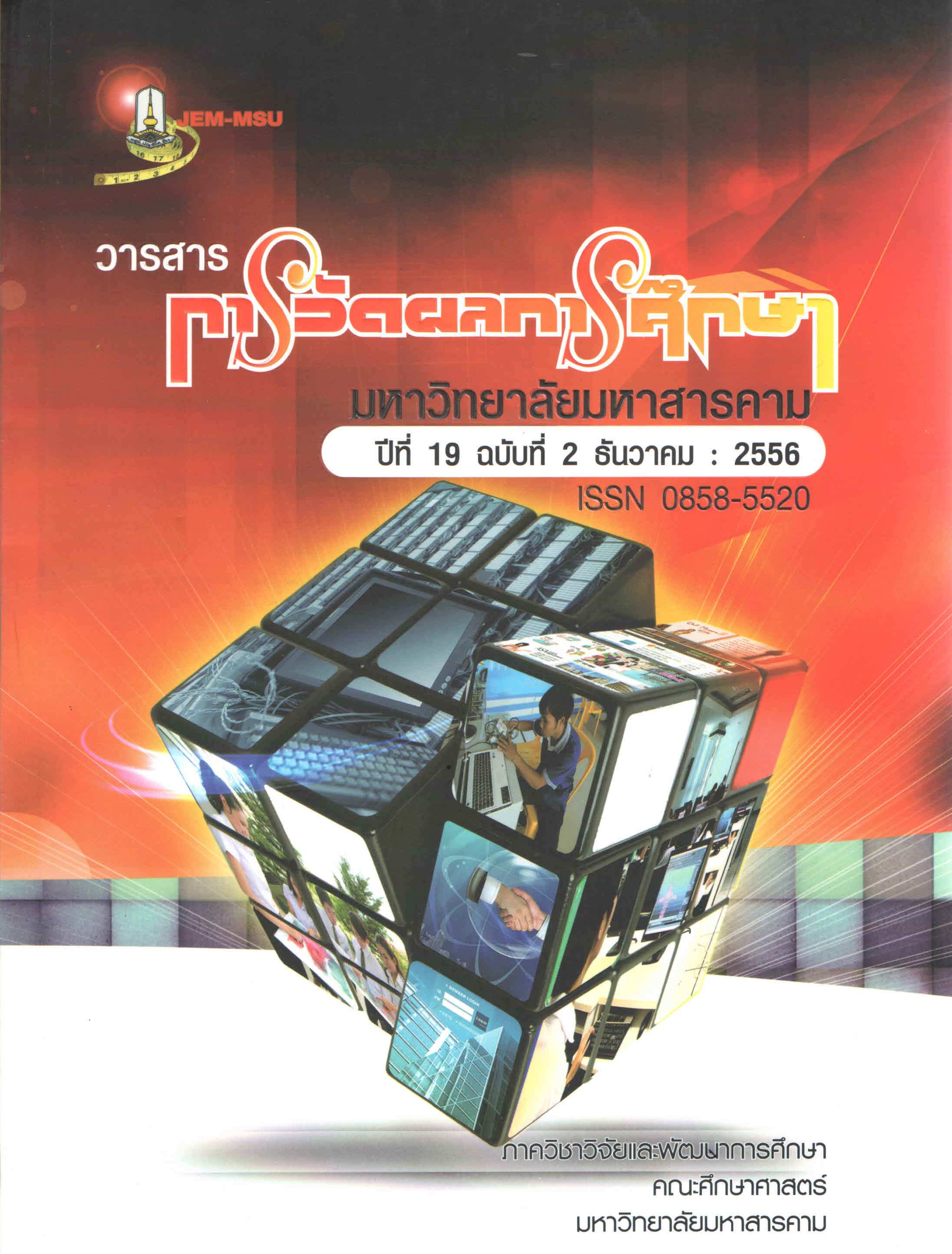Factors Discriminating Decision Making on University Choice of Graduate Students in Education of Northeast
Main Article Content
Abstract
The purposes of this study were to conduct a discriminant analysis decision making on
university choice of graduate students in education of northeast. The participants of this research
were 520 graduate students in education of northeast in the academic year 2010, obtained using
the stratified random sampling technique. The instrument used in the study was a questionnaire
on factors discriminating decision making on university choice of graduate students in education of
northeast, with discriminating powers ranging .34 - .73 and a reliability of .90. The statistics used for
analyzing data were frequency, percentage, mean, standard deviation, and stepwise discriminant
analysis.
The results of the study were as follows :
1. The factors which could discriminate decision making on university choice of
graduate students in education of northeast these 3 variables : university quality(X9), external
influences involving decision making on university choice(X6) and graduate students selection(X7).
2. The discriminant equations in raw-score and standard-score could be showed in the
order as below.
Function I Predictive equation in the raw-score form :
Y = -5.568 - 1.049(X6)+ .866(X7) + 1.356(X9)
Predictive equation in the standard-score form :
ZY = -.736 (ZX6)+ .259(ZX7)+ .774(ZX9)
Function II Predictive equation in the raw-score form :
Y = -6.071 + 1.056(X6) + .688(X7) + .008(X9)
Predictive equation in the standard-score form :
ZY = .740(ZX6) + .420(ZX7) + .005(ZX9)
factors discriminating decision making on university choice of graduate students into 2
functions were found that Function I, the multiple discriminators were university quality and
graduate students selection. Function II, the multiple discriminators were external influences
involving decision making on university choice, graduate students selection and university quality.
The multiple discriminant functions were 48.1 percent of original grouped cases correctly classified.
Article Details
The content and information contained in the published article in the Journal of Educational Measurement Mahasarakham University represent the opinions and responsibilities of the authors directly. The editorial board of the journal is not necessarily in agreement with or responsible for any of the content.
The articles, data, content, images, etc. that have been published in the Journal of Educational Measurement Mahasarakham University are copyrighted by the journal. If any individual or organization wishes to reproduce or perform any actions involving the entirety or any part of the content, they must obtain written permission from the Journal of Educational Measurement Mahasarakham University.

